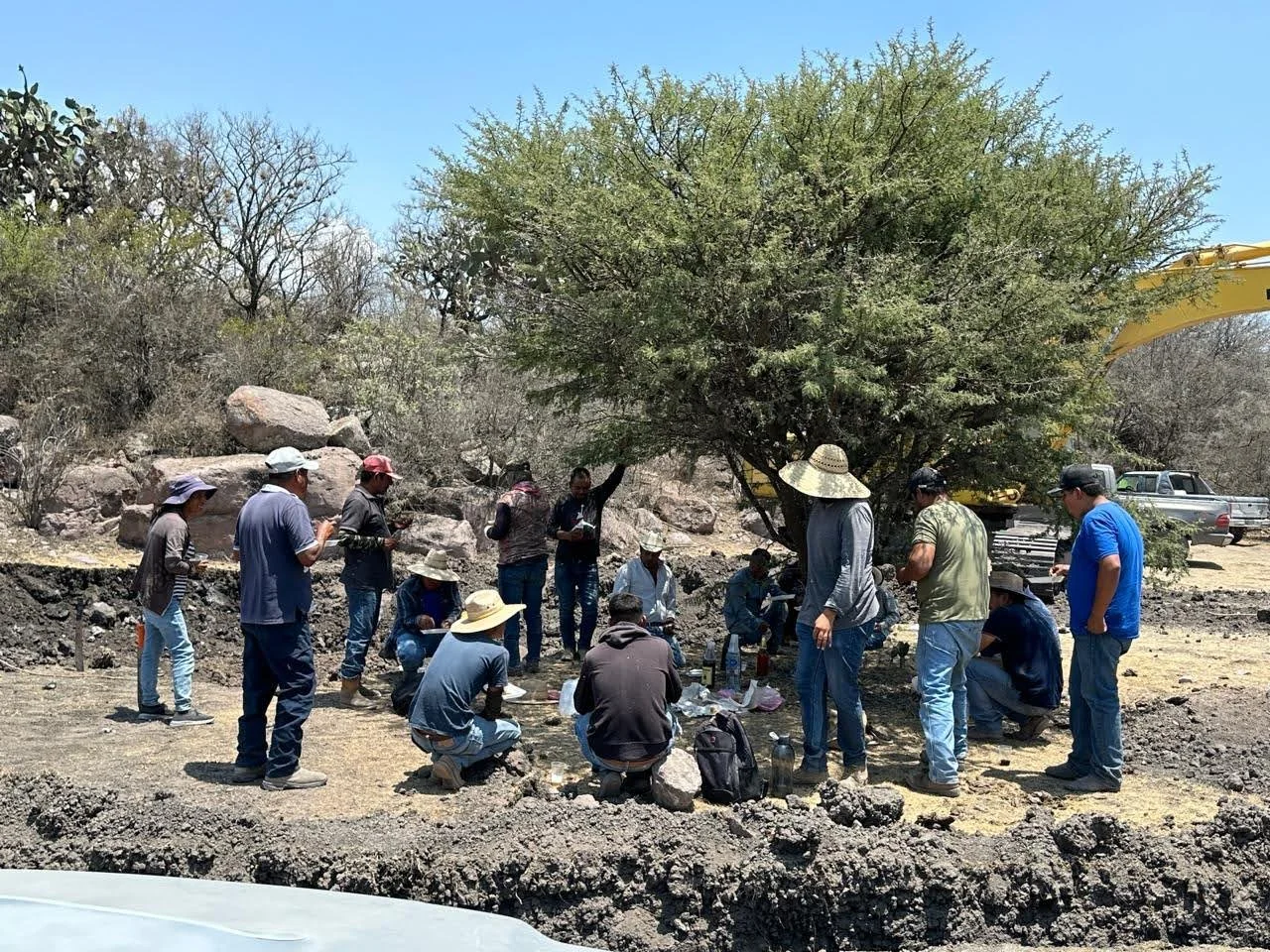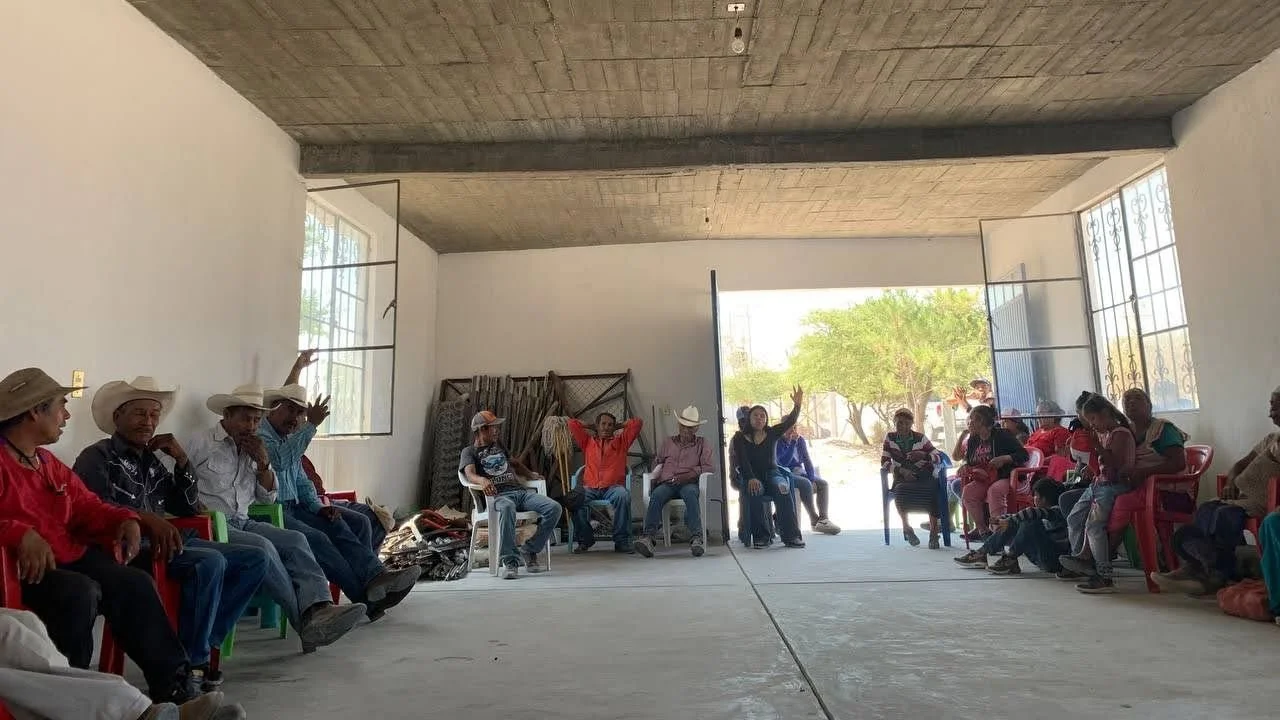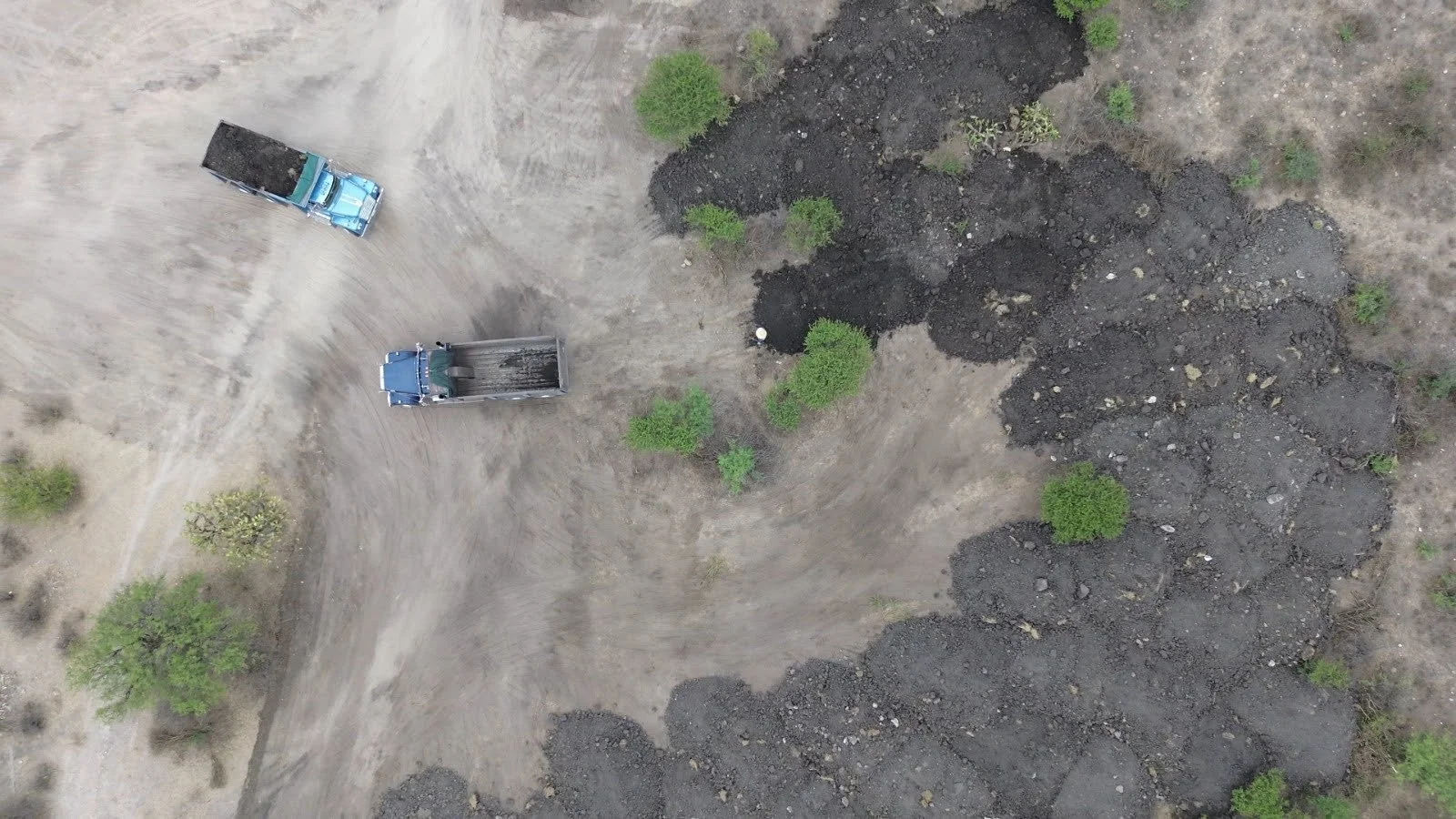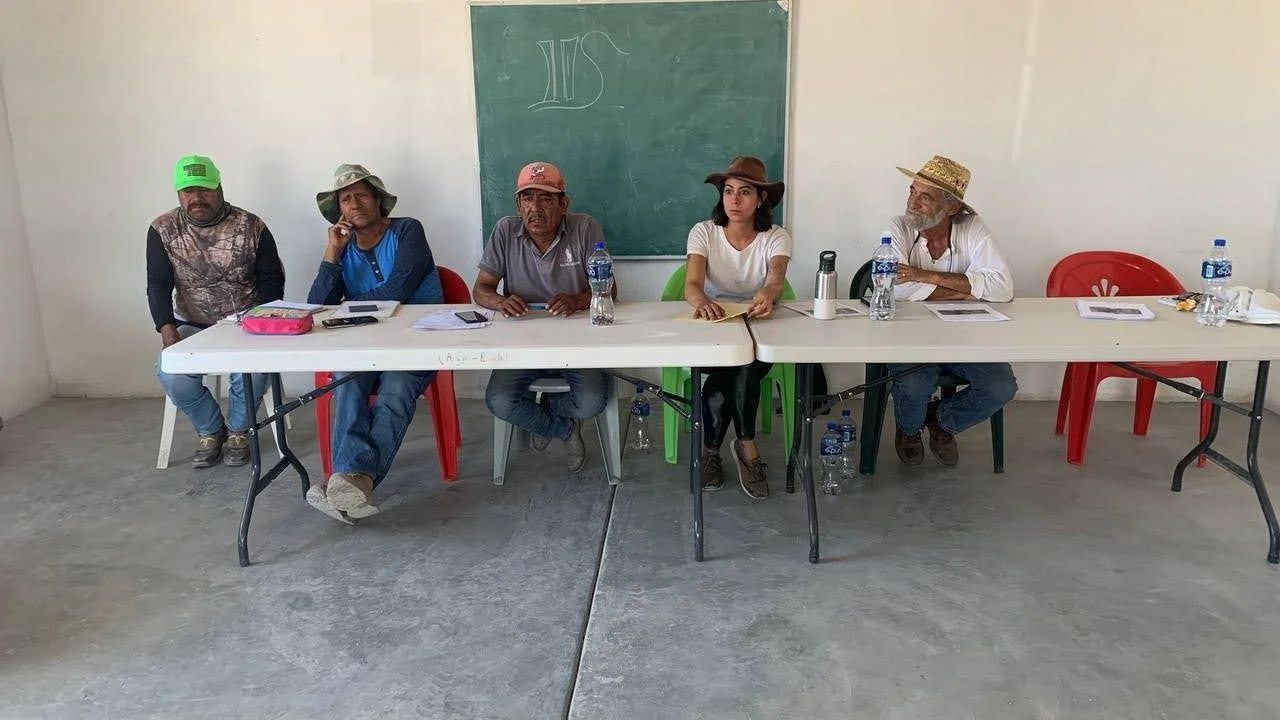Capturing Rainwater at the Whole Community Scale
Caption: Excavation of the Abandoned Bordo in the community of Los Torres
During the 20th century, the concept of bordos, or rainwater retention ponds, which long supplied communities in our region with water for millennia, were largely abandoned with the advent of deep-well drilling technology. Back in the 1950s, we started drilling wells and pumping water up from the deep aquifers beneath our feet. Unfortunately, we never stopped, or limited extraction. So, for decades, the water table has been dropping, now up to a dangerous rate of 3 meters a year, and has become contaminated with dangerous levels of arsenic and fluoride.
Today in our watershed, there are literally hundreds of abandoned bordos that are no longer in use. Over time, rainwater run-off and soil erosion has filled them with dirt, sometimes making it difficult to even discern their existence. Nonetheless, their memory serves as a reminder of the invaluable role these bordos can play in the lives of local communities and in sustaining a healthy hydrological cycle by helping to restore micro-watersheds, reforesting degraded lands, bringing back small-scale food production, and even grazing animals.
Photo: Members of the community of Los Torres working on the Bordo.
During the 20th century, the concept of bordos, or rainwater retention ponds, which long supplied communities in our region with water for millennia, were largely abandoned with the advent of deep-well drilling technology. Back in the 1950s, we started drilling wells and pumping water up from the deep aquifers beneath our feet. Unfortunately, we never stopped, or limited extraction. So, for decades, the water table has been dropping, now up to a dangerous rate of 3 meters a year, and has become contaminated with dangerous levels of arsenic and fluoride.
Today in our watershed, there are literally hundreds of abandoned bordos that are no longer in use. Over time, rainwater run-off and soil erosion has filled them with dirt, sometimes making it difficult to even discern their existence. Nonetheless, their memory serves as a reminder of the invaluable role these bordos can play in the lives of local communities and in sustaining a healthy hydrological cycle by helping to restore micro-watersheds, reforesting degraded lands, bringing back small-scale food production, and even grazing animals.
Photo: Community members of Las Torres at a local meeting discussing the development of the bordo project.
With financial support from the Gonzalo Río Arronte Foundation, the San Miguel Community Foundation, and a network of individual supporters, Caminos has embarked on a new collaborative effort with our long-term partner organization, INANA A.C. and under the technical leadership of Tikkun Eco Center, to initiate a bordo restoration project in the rural community of Los Torres.
Expanding Water Access in Los Torres
Photo: Overhead view of the bordo in Los Torres during the excavation process.
Situated between San Miguel and Dolores Hidalgo, Los Torres holds historical significance for Caminos de Agua as one of the first communities where we conducted groundwater quality testing in 2013, and it was also one of the first communities where we discovered excessive levels of fluoride contamination, today nearly 3 times above the limit.
Home to about 500 people, Los Torres, as our first Bordo restoration project, will soon have access to the equivalent of 11 Olympic-size swimming pools of rainwater, totaling 27 million liters. As part of the initial phase of this massive undertaking, 400 truckloads of soil have already been excavated and removed from the site, which will later be used by community members in their agricultural fields. The bordo will serve multiple ecosystem functions, including the creation of new habitats, support for large-scale reforestation, reduction of soil erosion, improved soil health, and a boost in biodiversity. Most importantly, local farmers will be able to utilize water from the bordo for irrigation and as a water supply for their livestock.
Photo: Ben Zion Ptashnik (on the far right with a white shirt) and Rebecca Ayala (second from right) of Tikkun Eco Center at a meeting with community members of Los Torres.
As the entire project is situated on commonly-owned land, called “ejidos,” , Caminos’ has been working closely with Tikkun and the community to foster lasting community unity, trust, and agreements to assure the long-term success of the program, while Tikkun is working tirelessly to develop the project from the beginning and lead the excavation and restoration process. Additionally, 20 or more community members have been working daily as part of the team to help with the restoration process – crucial to assuring that the bordo will continue to be used and maintained in the long-term.
“We are excited and very happy about the opportunity to do this project working as partners with Caminos. The process is evolving as a blueprint for how to evaluate and develop other bordo projects such as [Los Torres] in the future. Every project is unique, and we are learning more as we go, but this is very exciting for us, for Los Torres, and for our watershed.”
Ben Zion Ptashnik, Co-founder and President of Tikkun Eco Center
Bordos are a poignant reminder that valuable insights for our future can be found in the past. By reintegrating bordos into our water management practices, we are broadening the use of rainwater to fulfill various critical needs that would otherwise further deplete our overexploited groundwater resources.






